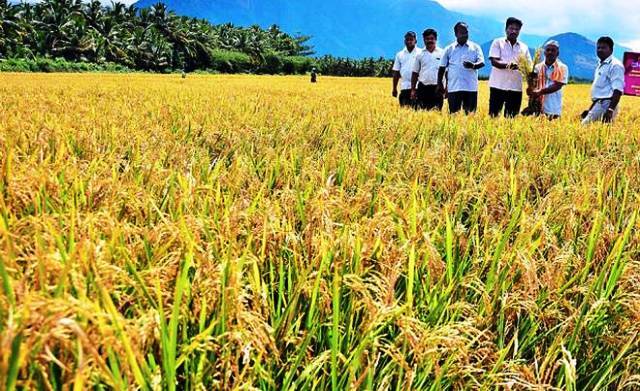
The University of Agricultural and Horticultural Sciences (UAHS), Shivamogga, has achieved significant strides in their conservation by establishing a seed bank and museum for farmers. This was achieved at a time when concerns are being expressed over the shrinking gene pool of native paddy varieties, known for their unique taste, aroma and medicinal qualities.
Seed Bank
The seed bank established at the UAHS, Shivamogga, is the repository of 190 native paddy varieties. It not only offers free seeds to interested farmers but also provides information on their cultivation by experts.
Paddy Varieties
Pradeep, Director of the Organic Farming Research Centre of the university, told The Hindu that the paddy varieties suggested differs from one agro-climatic zone to another. The flood-resistant varieties, like ‘Nereguli’ and ‘Yeedikuni’ are prescribed for farmers who have land on river banks that swell during monsoon. For farmers who cultivate paddy under rain-fed method, the drought-resistant varieties are given.
The work of conservation of native paddy varieties commenced with the establishment of the research centre on the campus in 2007.
Sahaja Samrudha, a forum of farmers that promote native farming practices and marketing the foodgrains cultivated under organic farming method, also joined hands with the university.

Collecting Paddy Seeds
In the initial period, senior scientists, teaching staff serving here and the students elaborated field work to collect paddy seeds from farmers. ‘Nereguli’, ‘Yeedikuni’, and other flood-resistant paddy varieties were collected through field work in Talaguppa, Anavatti, and Jade Gram Panchayat limits on the banks of the Varada in Shivamogga district.
These varieties can survive even if they are submerged in floodwaters for over 15 days. As part of the field work, the staff members and students visited paddy-growing villages in Koraput district of Odisha, and Bardhaman in West Bengal.
Seeds Exchange
In many villages, farmers refused to sell the seeds of native paddy varieties in their possession and instead opted for exchanging them. In Odisha, farmers gave away seeds of ‘Limchuri’ and ‘Gadaakutta’ varieties in their possession in exchange for ‘Gandhasale’ and ‘Rathnachudi’ varieties with the university students.
During kharif season, all 190 native paddy varieties are cultivated on a 10-acre land on the university campus without administering chemical inputs.
After harvesting, the seeds are distributed among interested farmers. Prior to harvesting, Kshetrotsava, a field day, is held in which farmers can visit the plot and select the seeds they need.
A museum where native paddy varieties are displayed with information related to the method of their cultivation and their origin has also been established on the campus.
Research on Nutritional Value
M.K. Naik, Vice-Chancellor of the UAHS, Shivamogga, said the university plans to conduct research on nutritional value of each native variety of paddy in its repository and publish the findings.
He said, “The University will seek help from institutes such as the National Institute of Nutrition, Hyderabad and the Central Food Technological Research Institute, Mysuru. The scientific confirmation of the nutritional benefits would help create a brand value for these paddy varieties.”
*Source- The Hindu















